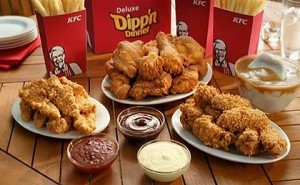
KFC has over 17000 outlets with presence in 105 countries & territories around the world. However, despite such a wide diversity in locations, two regions form the critical part of its success story: US and China. KFC was the first US restaurant to foray into China as early as 1987, when the wings of liberalisation were beginning to gather pace under Deng Xiaoping. That move paid rich dividends as China is its most profitable market today, contributing about half of its global sales. The company operates self-owned restaurants in China operated by fully owned subsidiary KFC China unlike in US where it follows the franchise model. Operating company outlets has a very big advantage as it ensures larger profit margins during periods of market expansion. On the other hand, during a turmoil it increases the financial risks for the shareholders of the firm. KFC appears to be on similar ground in China.
Is KFC maintaining quality standards in India? What do you feel ?
KFC follows a franchise model in India unlike China which further increases the risk of a similar problem. Furthermore, for most of the outlets in eastern India, frozen chicken is supplied from a Calcutta based poultry farm, raising further doubt whether such chicken is safe for consumption considering the distance involved in transport. The case might be similar for outlets in other parts of the country as well. It can only be hoped that the Indian food authorities are as active as their Chinese counterparts and the safety concerns of the Indian consumer are being adequately looked into.
You might like reading:
IIM Raipur Placements 2015: Avg salary at 11.14 lacs
IIM Raipur has achieved 100% placements for the fourth consecutive year in record time for its flagship Post Graduate in management (PGP) program. Companies from a variety of sectors showed interest in recruiting from IIM Raipur, owing to the diversity of academic backgrounds and work experience of the students in the 4th batch of its flagship Post Graduate Program in […]
14th International Conference on Information Technology @ XIMB
Xavier Institute of Management, Xavier University, Bhubaneswar on 21st December 2015, hosted the 14th International Conference on Information Technology, which is a premier international forum for sharing high quality research in the areas of Information Technology. The International Conference on Information Technology (ICIT) started in 1998, after a national conference on the topic was held at Bhubaneswar, India in 1997. The conference is […]






























